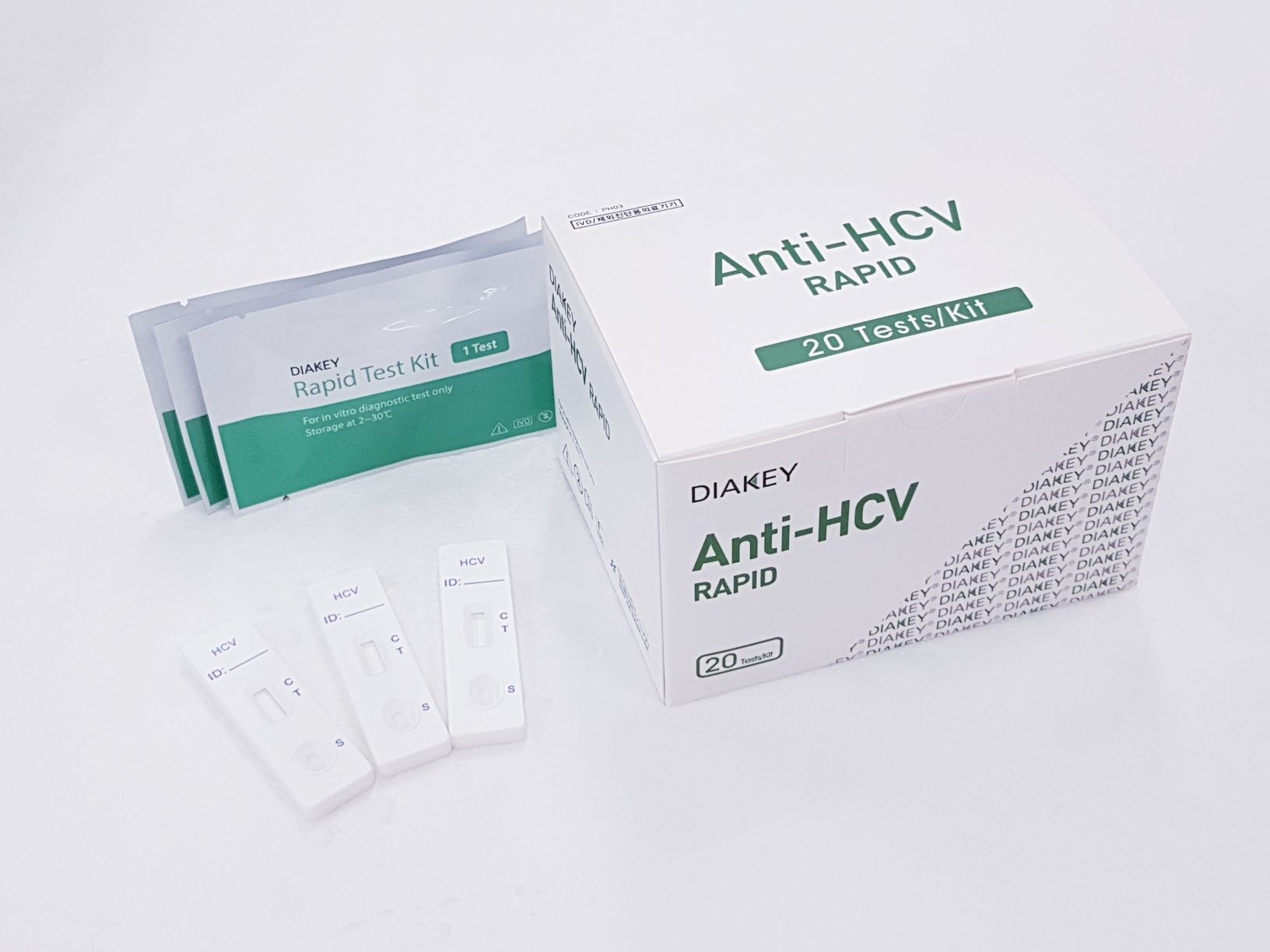DIAKEY Anti-HCV RAPID
The Hepatitis C Virus Antibody Test (Whole Blood/Serum/Plasma) is a rapid detection of Hepatitis C Virus Antibody
Summary
- KFDA Registration No
-
CAT No
PH03
-
TEST METHOD
Immunochromatographic assay, ICA
- SAMPLE VOLUME
- INCUBATION TIME
- STD RANGE
Download File
Intended Use
The Hepatitis C Virus Antibody Test (Whole Blood/Serum/Plasma) is a rapid detection of Hepatitis C Virus Antibody in whole blood, serum or plasma. For in vitro diagnostic use only. It is intended for over-the-counter and for prescription use
Hepatitis C caused by hepatitis c virus (HCV) infection, is mainly transmitted by blood/body fluids. Hepatitis c virus (HCV) main transmission through blood transfusion, acupuncture, drugs, etc. According to the world health organization, the world of HCV infection rate is about 3%, an estimated 180 million people are infected with HCV, around 35000 new cases of hepatitis c patients every year. Hepatitis c is a global epidemic, can lead to chronic inflammation of the liver necrosis and fibrosis, some patients may develop liver cirrhosis and hepatocellular carcinoma (HCC). Over the next 20 years mortality associated with HCV infection (liver failure and hepatocellular carcinoma (HCC) deaths) will continue to increase, great harm to patients health and life, has become a serious social and public health problems.
The Hepatitis C Virus Antibody Test (Whole Blood/Serum/Plasma) is a lateral flow chromatographic immunoassay based on the principle of the double antigen–sandwich technique. The membrane is pre-coated with anti-HCV antigen on the test line region of the test. While detecting a positive sample, anti-HCV antibody in the specimen (whole blood, serum or plasma) reacts with the particle coated with anti-HCV antigen. The mixture migrates upward on the membrane chromatographically by capillary action to react with anti-HCV antigen on the membrane and generate a coloured line. The presence of this colored line in the test region indicates a positive result, while its absence indicates a negative result.
To serve as a procedural control, a colored line will always appear in the control line region indicating that the proper volume of specimen has been added and membrane wicking has occurred.
Use Precaution
Be careful when handling all samples, reagents, or devices used in the test as they may be the source of infection.
All reagents, human body samples, etc. are handled at the designated location.

